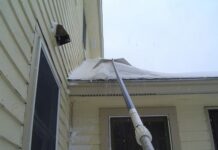By Melissa Rayworth
As temperatures drop and daylight is in shorter supply, we fight back: We crank up the heat in our homes and turn on lights earlier and earlier. And yet we also want to keep our heating and electric bills as low as we can.
Can you keep your home warm and inviting all winter while still conserving energy?
Here, three home design experts offer advice on how to keep things cozy while minimizing energy use this winter. Their suggestions range from the traditional (there’s a reason why your grandmother hung those heavy curtains in winter) to the high-tech, including a thermostat that can talk to your iPad.
Maxwell Ryan, founder of the popular home décor website ApartmentTherapy.com, is a designer. John Colaneri, co-host of HGTV’s Kitchen Cousins, is a construction expert who builds and remodels homes.
Both offer identical pieces of advice about staying warm while conserving power and saving money: Swap out your old incandescent bulbs (and those swirly compact fluorescent bulbs, too) for the new Cree brand LED bulbs.
“They can last longer than 10 years and they use 84 percent less energy than incandescents,” Ryan said. “They also are dimmable” and give a warm-looking light — a big change from the energy-saving compact fluorescents.
“If you do the math on the LED,” he said, the bulbs save you so much on electricity that they pay for themselves within a year and then last about nine more years.
Colaneri and Ryan also both advise homeowners to replace old thermostats with new Nest brand models. “They take 30 percent off your bill each month,” Colaneri said. “And they look very high-tech and cool to display.”
Nests are programmable “learning thermostats,” which means they track your habits and adjust accordingly. They also connect via Wi-Fi to check weather reports online, and you can control them remotely from an iPad.
There is new outdoor technology, as well. On your deck or patio, designer Brian Patrick Flynn suggests adding a new propane-powered space heater. The newest models are cost-effective and stylish, said Flynn, executive producer of HGTV.com’s Holiday House.
“They look like modern sculpture,” said Flynn, “and many of them are under $500. To ensure my outdoor spaces stay warm during the winter, I keep modern, 7-foot tall space heaters in my covered outdoor living room. They’re on wheels, so it’s easy to move them around to wherever people are seated. And once lit, the glass tubes which contain the flame from the propane tank put on a gorgeous show.”
Warm, cozy upholstery fabrics work on a practical level by holding your warmth when you touch or sit on them. But Ryan points out that they also work visually: A room full of soft, warm fabrics will give you a psychological sense of warmth that adds to your enjoyment.
So add thick throw blankets to chairs and sofas, and swap out silk-covered pillows and even lampshades for ones covered in thicker, nubbier fabrics like muslin and burlap.
Ryan also recommends using thick curtains in winter. A decade ago, he said, “curtains were considered fusty and old-fashioned and expensive.” But with so many beautiful, inexpensive curtains available today, they’ve become popular again.
Besides adding color or a bold pattern to a room, curtains also block cold air that might leak in around windows. And they muffle sound from outside, which Ryan said helps make rooms feel more insulated in winter.
The same technique can help warm up outdoor spaces. Flynn recommends Sunbrella’s outdoor velveteen fabric for chairs and sofas. He also likes thick, woven blends.
“Velveteen is amazing for the outdoors,” he said, “since it’s warm and fuzzy.”
Crackling flames in an indoor fireplace can change the feel of a room instantly. And outdoors, they bring a welcome infusion of heat and light on a winter evening.
“Outdoor fireplaces are increasingly more and more popular, coast to coast,” Flynn said. “They’re not all that much of an expense like an outdoor kitchen would be.”
If you’re building a new outdoor fireplace, leave ample room for seating. “Many times homeowners have outdoor fireplaces built, but there’s only enough room for a small table or two chairs. What’s the point, people? The whole idea is to gather and stay cozy outdoors,” Flynn said.
He suggests planning “at least 12-by-14 feet of space around the front of the fireplace to ensure a sofa and loveseat as well as a coffee table and end tables will fit.”
Gleaming hardwood or tile floors are lovely in spring and summer. But in cold weather, add a thick rug or swap out a thin one for something heavier. This will not only warm your feet, but also change the look and sound of your space.
“When acoustics are dampened,” Ryan said, “the room feels warmer.”
An outdoor rug can have the same impact. “Thick outdoor area rugs are made of acrylic/wool blends,” Flynn said. “The wool feels great on your feet and definitely locks in warmth.”
This last tip, shared by Maxwell Ryan, comes from a conversation he had years ago with home décor guru Martha Stewart. She advised him to run his ceiling fans backward in winter to push warm air back down along the walls of the room.
If you don’t have ceiling fans, Ryan suggests adding one or two for energy savings and added comfort year-round. — AP












